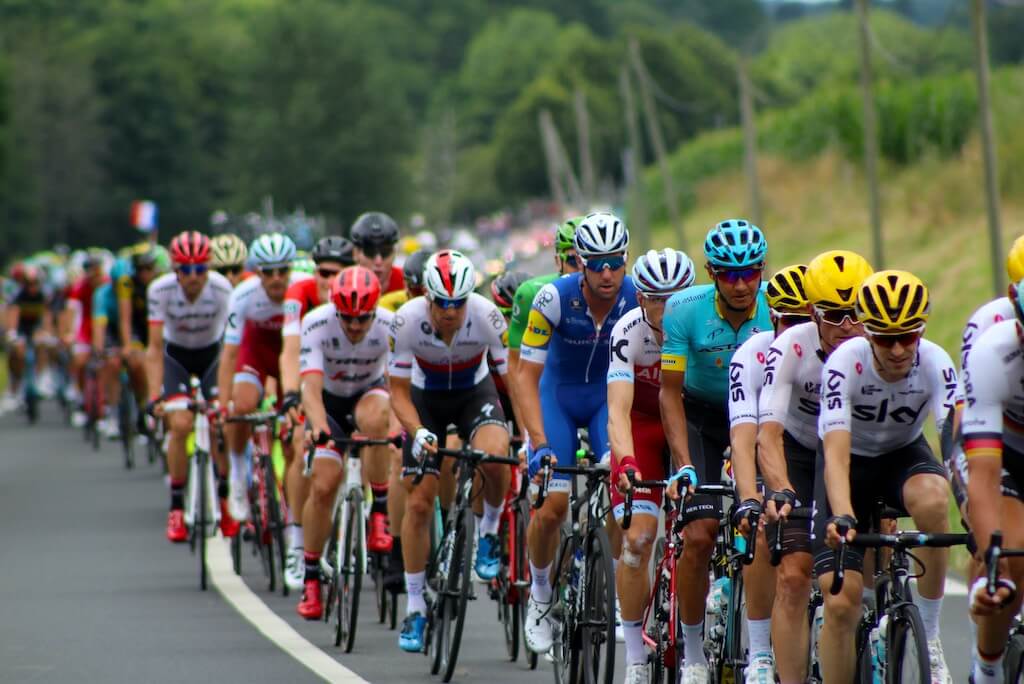Autumn Gear Guide
Find inspiration in our Gear Guide that will keep you out on your bike through wind or rain.
Download NowIn enlightened urban cycling circles, there has long been a debate about the efficacy of wearing helmets. If there is safe cycling infrastructure in place, and a reasonable non-race speed on an upright bicycle with full view, the risk is minimal. We’ve all seen the photos of Copenhagen and Amsterdam, with hundreds of bicyclists and […]
In enlightened urban cycling circles, there has long been a debate about the efficacy of wearing helmets. If there is safe cycling infrastructure in place, and a reasonable non-race speed on an upright bicycle with full view, the risk is minimal. We’ve all seen the photos of Copenhagen and Amsterdam, with hundreds of bicyclists and not a helmet in sight. Indeed it’s an issue that has been discussed within our Momentum community since, well, at least this 2014 editorial. But this new study, albeit not a deep dive, is something entirely different.
The study conducted by researchers Mark Limb and Sarah Collyer sheds light on the impact of safety attire on the perception of cyclist dehumanization. The study, published in the Transportation Research Part F: Traffic Psychology and Behaviour journal, explores the factors contributing to negative attitudes towards cyclists and their potential implications for road safety.
The research, based on a survey involving 563 respondents, revealed that approximately 30% of participants considered cyclists to be less than fully human. Yes, you read that correctly, less than human. Explains a lot, actually. Interestingly, cyclists wearing helmets were perceived as less human compared to those without helmets. Moreover, cyclists wearing safety vests without helmets were perceived as the least human.
The study also found that dehumanization was more strongly associated with visible safety gear, such as helmets and vests, rather than obstruction of the hair and eyes. Additionally, the perceptions of dehumanization varied among respondents based on gender.
Negative attitudes towards cyclists hinder efforts to promote active and environmentally friendly forms of transportation, such as cycling. This study contributes to the growing body of research on cyclist dehumanization and its potential impact on road safety. Understanding the factors that contribute to these negative perceptions can help inform strategies to reduce dehumanizing attitudes and aggressive behavior toward cyclists, thereby enhancing their safety on the roads.

The researchers highlight the need for further exploration of why cyclists are perceived as less than fully human. While previous studies have suggested that appearance-based factors, such as helmets obscuring hair and facial features, may play a role, there is currently a lack of empirical evidence to support this claim.
The study employed a two-paired alternative forced-choice questionnaire to assess participants’ perceptions of dehumanization based on different types of cycling attire. The results were analyzed using a Bradley-Terry probability model, which identified the attire more likely to be selected as less human.
In addition to attire-related factors, the study also considered general attitudes toward cyclist dehumanization, aggressive driving behavior toward cyclists, and demographic variables such as gender, age, and income.
As efforts to promote cycling as a sustainable mode of transportation continue, it is crucial to address the negative attitudes and perceptions that hinder its uptake. By understanding the impact of safety attire on cyclist dehumanization, policymakers, urban planners, and advocacy groups could develop targeted interventions and initiatives to create safer environments for cyclists and encourage more people to adopt cycling as a viable means of transport.
And, you know, get drivers to consider cyclists as bona fide human beings.
If perceptions of safety equipment are in fact contributing to the dehumanization of cyclists, and the dehumanization, in turn, contributes to increased levels of aggressive behavior from drivers (Delbosc et al., 2019), then there are possible implications for both public safety and the wider adoption of healthy, carbon neutral, active transportation modes like cycling.
The study’s findings call for increased awareness and education to promote mutual respect and understanding between cyclists and motorists. By fostering a culture of empathy and recognizing the shared humanity of all road users, we can work towards creating a safer and more sustainable transportation ecosystem.
Find inspiration in our Gear Guide that will keep you out on your bike through wind or rain.
Download Now
Leave a comment